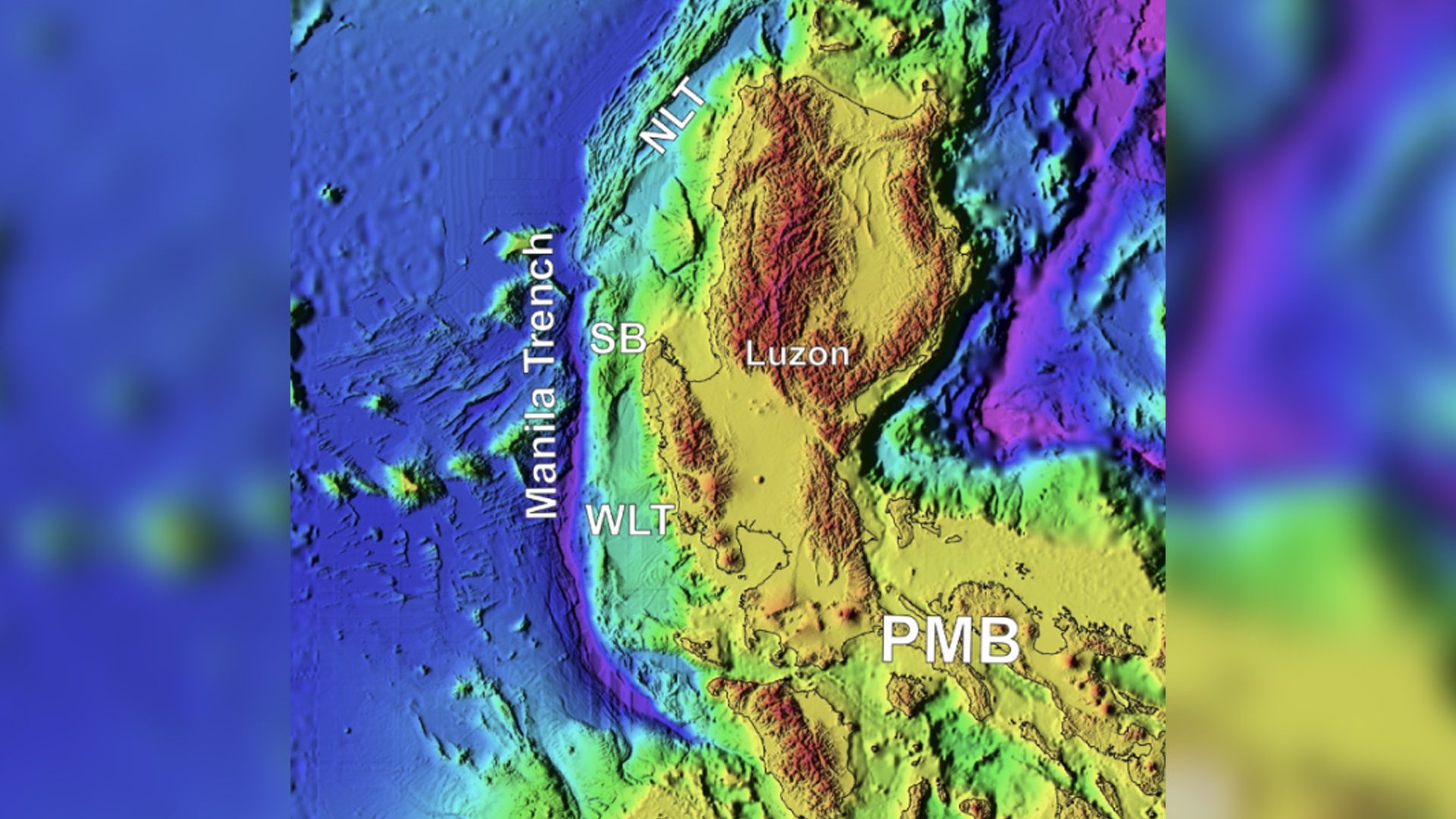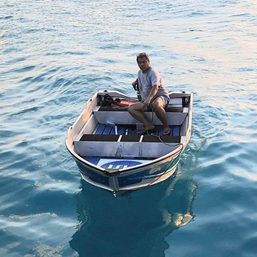SUMMARY
This is AI generated summarization, which may have errors. For context, always refer to the full article.

MANILA, Philippines – Evidence of frozen natural gas or gas hydrates in the Manila Trench increases the possibility of tapping other alternative energy sources in the Philippines but can potentially harm people and the environment.
Elisha Jane Maglalang, Leo Armada, Madeleine Santos, Karla May Sayen, and Carla Dimalanta of the University of the Philippines (UP) Diliman College of Science National Institute of Geological Sciences, Shu-Kun Hsu of the National Central University’s Department of Earth Sciences in Taiwan, and Graciano Yumul Jr. of the UP Los Baños School of Environmental Science and Management (UPLB-SESAM) published their article on the prospective occurrence of gas hydrates in the Manila Trench forearc on the Marine and Petroleum Geology journal and shared their discovery to the public.
“During our study, we identified certain indicators, also known as bottom-simulating reflectors (BSRs), that suggest the possible presence of gas hydrates…. Based on this feature, we determined the size of the area where the gas hydrates may be located. However, it is important to note that our data does not provide us with [the] volume or amount of gas hydrates that may be present in the area,” Dimalanta, Armada, and Magalang jointly answered Rappler’s questions on behalf of their coauthors.
These BSRs encompass a total area of 15,400 square kilometers or more than the size of Palawan, specifically found on the frontal wedge of the North Luzon trough (NLT) and in the West Luzon Trough (WLT) basin fill. The Manila Trench forearc means an area in the subduction zone, which is in between an oceanic trench and a volcanic arc.

Gas hydrates are formed into ice-like structures when a low-density gas, like carbon dioxide or methane, combines with water due to pressure and low temperature. This trapped gas, which is commonly methane, undergoes a thermogenic process similar to how petroleum is generated. As these are similar to traditional fossil fuels, they are finite and will take millions of years to replenish once extracted.
With the Department of Energy’s statement that the Malampaya gas field is projected to be depleted by 2024, the interviewed researchers highlighted their research as a vital step to finding alternative energy sources for the country, including gas hydrates.
Risks involved, future research
Further exploration and mining of gas hydrates, on the other hand, can be a geologic and environmental disaster. Confirming the presence of gas hydrates requires drilling as a viable option for extraction. The researchers mentioned that “studies in other countries have shown that there may be a potential risk of accidental release of methane from gas hydrates during drilling.”
With methane being responsible for about 30% of the global temperature rise, further release of methane from gas hydrates could intensify global warming or cause submarine landslides that could trigger tsunamis.
Since gas hydrates are unstable solids, they can disconnect and melt when certain conditions in which they crystallized suddenly change, such as during earthquakes and climate warming. Unfortunately, the Manila Trench is an active zone responsible for several earthquakes in Western Luzon.
“Given the depths of the deposits inferred in the study (deeper than 2,000 meters below mean sea level), the effects of the warming oceans on gas hydrate stability beneath seafloor are expected to be negligible,” the researchers said. These assumptions, as they clarified, require more detailed investigations due to the different complex factors affecting gas hydrate stability.
While its use as a potential energy source (as opposed to risks) is still heavily debated, five countries, including the United States, South Korea, Japan, Canada, and China already have gas hydrate production. Understanding this resource could lead the country to better decisions.
“However, gas hydrate research in the Philippines is still in its early stages,” the researchers mentioned. Aside from confirming the presence of possible gas hydrates east of the Manila Trench and conducting an inventory throughout the country through further research, they clarified the critical part of using and developing the right technologies “for the safe and environmentally friendly extraction of gas from hydrate deposits.”
The researchers mentioned that the Philippines has limited studies about its surrounding waters, specifically about geological and geophysical explorations of its exclusive economic zone, as compared to other archipelagic countries. These limitations further restrict the country from maximizing and protecting its indigenous resources.
“We hope that the government will provide substantial funding support for studies similar to the initial work that we conducted…. The government must invest in developing the research infrastructure and a critical mass of scientists, specifically marine geologists and geophysicists, with technical expertise to conduct these studies,” the interviewed scientists said, recommending advancing this pioneering research in the country.
They clarified that while they are raising awareness of the scientific studies being conducted to identify offshore resources in the Philippines, it is still in the earliest phase of gas hydrate research and far from commercial production. The Malampaya gas field, for instance, was discovered in 1989 and only started commercial production in 2002.
“Only when the technology for the safe extraction of gas hydrates is developed can we rely on it as an alternative energy source,” the interviewed researchers noted.
Currently, the scientists are conducting explorations of the country’s offshore places to expand its geophysical dataset. – Rappler.com
Add a comment
How does this make you feel?








![[OPINION] Remembering RSP, Norman and Jessie – geoscientists for the people](https://www.rappler.com/tachyon/2024/04/raymundo-punongbayan-April-29-2024.jpg?resize=257%2C257&crop_strategy=attention)









There are no comments yet. Add your comment to start the conversation.